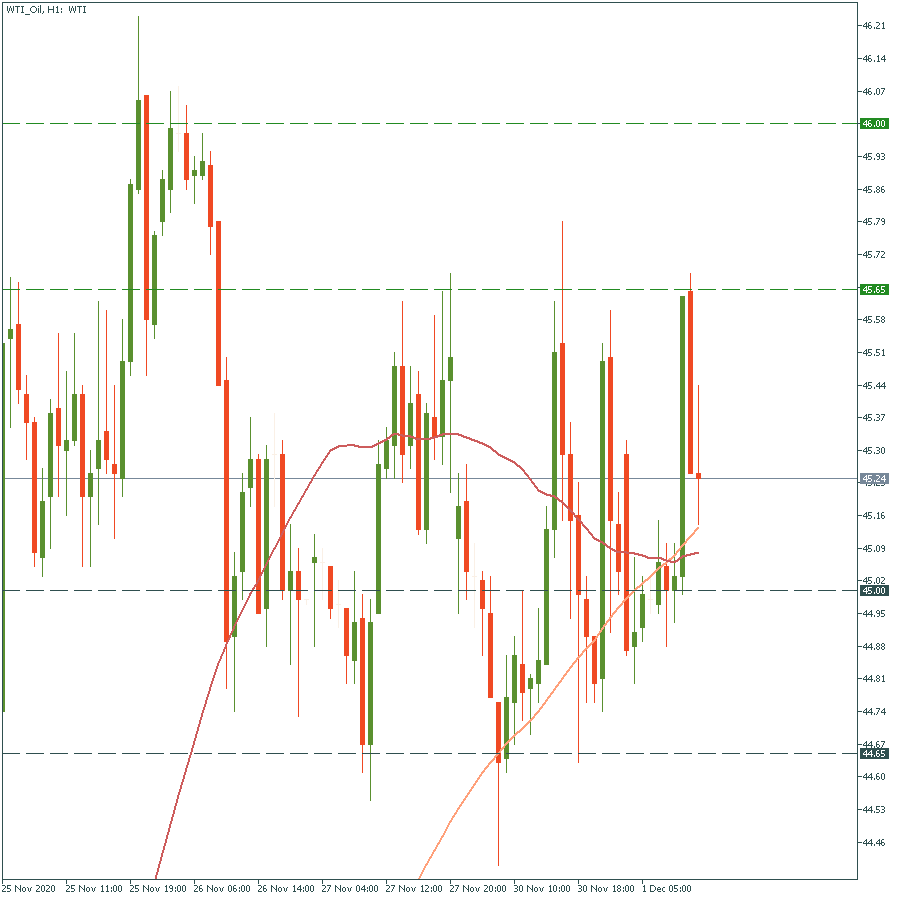
The G20 summit took place in Bali, Indonesia, on November 2022…
For a seamless experience, click “Redirect me.”

Don’t waste your time – keep track of how NFP affects the US dollar!
Data Collection Notice
We maintain a record of your data to run this website. By clicking the button, you agree to our Privacy Policy.

Beginner Forex Book
Your ultimate guide through the world of trading.
Check Your Inbox!
In our email, you will find the Forex 101 book. Just tap the button to get it!
Risk warning: ᏟᖴᎠs are complex instruments and come with a high risk of losing money rapidly due to leverage.
71.43% of retail investor accounts lose money when trading ᏟᖴᎠs with this provider.
You should consider whether you understand how ᏟᖴᎠs work and whether you can afford to take the high risk of losing your money.
Information is not investment advice
Investors are waiting for the significant decision of OPEC+ members to prolong oil output cuts or stop them. Yesterday, they failed to come to a common conclusion. That pushed oil prices down below $45.00. However, the market euphoria over having a vaccine soon drove riskier assets upward as well as oil.
OPEC+ will meet the next time on Thursday to discuss the oil supply’s regulations. According to RBC Capital Markets, OPEC+ should agree on further cuts for about 3 months. On the one hand, the virus is still a severe problem, which has strong pressure on oil demand. On the other hand, the recent Chinese Manufacturing PMI report was better than expected and signaled the industry expansion. China is a huge oil importer, that’s why a recovery of the economic activity there will increase the oil demand, which should underpin oil prices in the end.
WTI oil is trading sideways from $44.65 to $45.65. If it manages to break the top of this range, the way up to the high of November 26 at $46.00 will be clear. On the flip side, the move below the support of $45.00 will drive crude oil to yesterday’s low of $44.65. However, it’s likely to pull back from $45.00 and turn to the upside to continue its zig-zag movement.
To trade WTI oil with FBS you need WTI-21F, which expires on December 18.


The G20 summit took place in Bali, Indonesia, on November 2022…

The deafening news shocked the whole world yesterday: the British Queen Elizabeth II died peacefully at the age of 96…

After months of pressure from the White House, Saudi Arabia relented and agreed with other OPEC+ members to increase production.

eurusd-is-falling-what-to-expect-from-the-future-price-movement

Greetings, fellow forex traders! Exciting news for those with an eye on the Australian market - the upcoming interest rate decision could be good news for Aussies looking to refinance or take out new loans. The Mortgage and Finance Association Australia CEO, Anja Pannek, has...

Hold onto your hats, folks! The Japanese yen took a nosedive after the Bank of Japan (BOJ) left its ultra-loose policy settings unchanged, including its closely watched yield curve control (YCC) policy. But wait, there's more! The BOJ also removed its forward guidance, which had previously pledged to keep interest rates at current or lower levels. So, what's the scoop? Market expectations had been subdued going into the meeting, but some were still hoping for tweaks to the forward guidance to prepare for an eventual exit from the bank's massive stimulus
Your request is accepted.
We will call you at the time interval that you chose
Next callback request for this phone number will be available in 00:30:00
If you have an urgent issue please contact us via
Live chat
Internal error. Please try again later